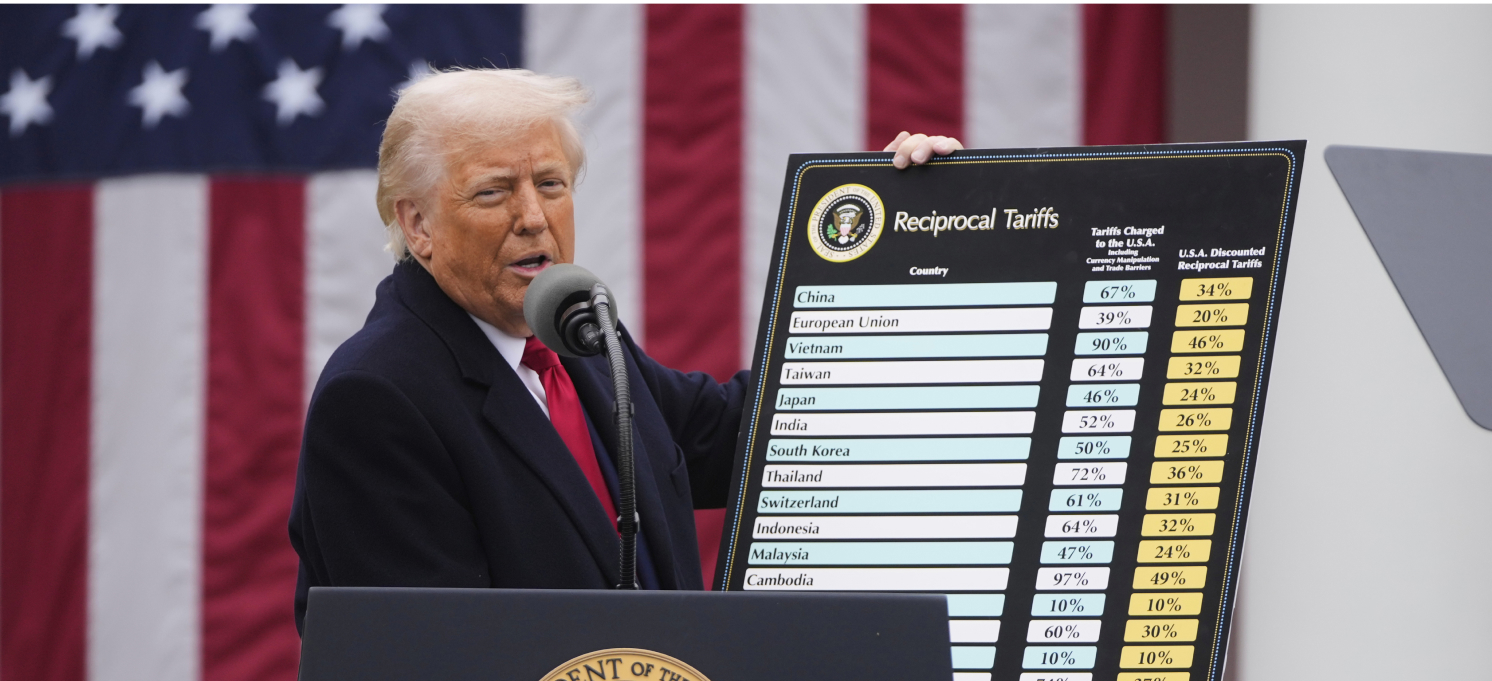
Why is Russia’s economy booming?
Hello! Welcome to your weekly guide to the Russian economy — written by Alexandra Prokopenko and Alexander Kolyandr and brought to you by The Bell. Our top story this week is the St. Petersburg Economic Forum and Russia’s rapidly growing economy. We also look at the Central Bank’s decision to keep rates on hold, while warning of likely future rises.
SPIEF in 2024: A thriving economy, but no top-level guests
The annual St. Petersburg International Economic Forum (SPIEF) kicked off this week – the third since the full-scale invasion of Ukraine. The showpiece event used to be attended by Western leaders and the heads of big multinationals, but Russia’s ongoing international isolation meant that President Vladimir Putin had to make do with hailing the country’s achievements in front of the presidents of Bolivia and Zimbabwe, plus a delegation from the Taliban. However, Russia’s economy is in good shape and that apparently gave the gathering a certain buzz. “It felt just like the good old days, when we were friends with everyone and were expecting investors,” one participant told The Bell.
One of Putin’s favorite talking points – repeated throughout his appearances at the forum – is how the Russian economy is actually profiting from sanctions. And there’s some truth in this. Sanctions have isolated the economy from external shocks and, in some ways, that makes it stronger. As a result, we’re seeing a situation in which, despite the war and sanctions, Russia’s economy is booming, with both business and the general public feeling more and more confident. At the end of May, the Central Bank’s business climate indicator hit a new 12-year high. And in the first quarter of this year, we saw record levels of investment activity among domestic businesses.
In the first three months of this year, Russian GDP grew as much as 5.4%. That’s even more than the previous three months. Figures for April are more modest, but indicate continued economic growth in terms of household consumption and investment activity. This economic performance is driven by three main reasons:
The exodus of foreign companies and demand for import substitution
According to the Kyiv School of Economics, more than 1,600 transnational companies either left Russia or suspended operations following the full-scale invasion of Ukraine. However, only 666 of these are truly gone (liquidated or sold). It was the servicing and manufacturing sector that bore the brunt of the exodus. The automotive industry suffered the greatest damage, followed by suppliers of consumer, industrial and investment goods and services. Finance, insurance, science and technology, auto repair and trade also took significant hits.
However, the exodus also opened up opportunities for Russian companies. Thus, in the first three months of this year, profits more than doubled for companies in the finance and insurance sector. Tourism services saw profits up an eye watering 52 times, construction 41 times. In the 12-month period profits have stagnated, though close to their highs. “Business taxes are quite low compared with other countries,” the head of one financial service company said in conversation with The Bell. “Both people and their money are locked inside the country and that is pushing up domestic demand fast. Import substitution opens a lot of niches and I know people who are living very, very well.”
Increased domestic demand fueled by state spending and credit
One of the key drivers of economic growth has been state spending. And additional demand from the state has been transferred to the general public and businesses via state contracts, budget transfers and social handouts. Salaries in March this year went up 21.6% year on year in nominal terms, and 12.9% in real terms.
Lending growth doubled in the first quarter of this year, despite a double-digit interest rate. Retail loans were up 3.7% compared with the previous quarter and auto finance is growing: the average loan to buy a vehicle went up from 1.2 million rubles to 1.4 million rubles last year. This is in line with increased prices at dealerships: Russian cars rose 24% in price over the course of the year, while foreign-made ones increased 11%. In addition, we’re seeing a new class of borrowers: people with high incomes prefer to generate interest on savings (encouraged by rates of over 17%) while using cheaper credit to cover current expenditure. “People who had poor credit ratings are suddenly creditworthy and are starting to take out bigger loans, even though interest rates are really high,” German Gref, head of state-owned Sber, Russia’s biggest bank, said in a speech earlier this month.
Corporate borrowing also keeps growing (up 1.9% in April and 1.8% the month before), according to the Central Bank, with developers borrowing to fund housing construction projects, while transport and IT firms also leading the way.
Businesses are effectively unable to transfer funds out of Russia
Difficulty moving money in and out of Russia is both a result of Western sanctions, and restrictions imposed by Moscow. But the isolation of Russia’s banking system, the enforcement in the West of strict compliance requirements on funds originating in Russia, freezing accounts, and other wartime issues are forcing high net worth individuals to find ways of “parking” their money in Russia.
By the end of 2023, the number of Russians with capital over 100 million rubles was up 50%. Their total capital showed a record growth of 62%, according to the Frank RG consultancy.
These high net worth individuals (HNWI) account for about 23% of Russia’s total financial capital. “The most significant driver of the growth of HNWI’s financial capital in Russia was an influx of “new money” which is mainly due to a reduction in capital outflow,” said Lyubov Prokopova, project director at Premium & Private Banking Frank RG.
Cross-border transfers in 2023 were down 35% year-on-year to 2.9 trillion rubles, according to the Central Bank. This is a turnaround from the first year of the war in Ukraine when the capital held by wealthy Russians tumbled more than 20% to 10.9 trillion rubles. This was caused by capital flight, a stock-market collapse and the withdrawal of capital into illiquid forms (gold, property and businesses). However, restrictions on Russian money steadily increased: international transfer fees went up; private funds faced stricter compliance; and some European Union banks refused to work with any Russians. This all contributes to Russian money staying “at home” and, ultimately, going to work within the Russian economy.
Why the world should care
As we’ve seen, both state and private demand are helping turbo-charge Russia’s militarized economy and fueling business optimism. A weakening of Western financial sanctions would encourage capital flight and weaken the Kremlin's war machine. However, the situation also has political consequences: the war in Ukraine is becoming associated in the minds of many with a time of economic opportunity and increased profits – not with sanctions, repression or violence.
Central Bank holds rates, but signals future rise
The Central Bank left interest rates on hold at its board of directors meeting Friday, but sent a “hawkish” signal to the market. This means a rate rise next month is almost inevitable. The regulator acknowledged that inflation remains stubbornly high.
- “If the consistent inflation pressure does not start to ease and pro-inflation risks begin appearing, we allow for the possibility of a significant interest rate rise in July,” Central Bank head Elvira Nabiullina said in the press conference after the meeting. Nabiullina has said previously that she expects inflation to return to the Central Bank’s 4% target rate in 2025. Right now, inflation is running at 8%.
- For the first time this year, there was disagreement among analysts about the bank’s decision in advance of Friday’s meeting. In a survey by news agency Bloomberg, a small minority predicted the bank would opt for a rate hike. In previous months, analysts have unanimously predicted that the rate would go unchanged.
- The market is ready for rate rises, with banks announcing increases in advance of the meeting, as well as planning increases for next month. Gref explained the issue at the St. Petersburg forum: “The economy is seriously overheating. It’s growing at a rate faster than it can manage, which pushes up demand and inflation.”
Why the world should care
Few have any alternative ideas for dealing with inflation and economic overheating apart from waiting for the influence of high rates to tell. However, the effect of a Central Bank hike is not instant, and analysts believe borrowing in Russia will not begin to slow until the fall.
Figures of the week
Weekly inflation between May 27 and June 2 rose 0.17%, according to the State Statistics Service. Annual inflation is running at 8.17%.
The Finance Ministry has increased the projected deficit in the budget from 1.59 trillion rubles to 2.12 trillion. That represents a total of 1.1% of GDP. An explanatory note to the change said that increased expenditure is tied to the implementation of Putin’s announcements during his state-of-the-nation address on Feb. 29.
Russia’s revenue from oil was up by 50% year-on-year in May, according to calculations from Bloomberg. And revenue from all energy exports climbed to 793.7 billion rubles in May (up 39%). However, revenue was down 35% month-on-month (because of a high base in April when oil companies paid a quarterly tax on additional income).
Further reading
Kremlin Seeks Greater Battlefield Effectiveness With Military Purge



PAID SUBSCRIPTION LAUNCH
From May 1, 2025, The Bell in English will no longer be free
From May 1, 2025, all The Bell’s newsletters and online content will be behind a paywall. We have taken this decision so that The Bell can remain financially independent, and maintain our high standards of journalism and economic expertise





